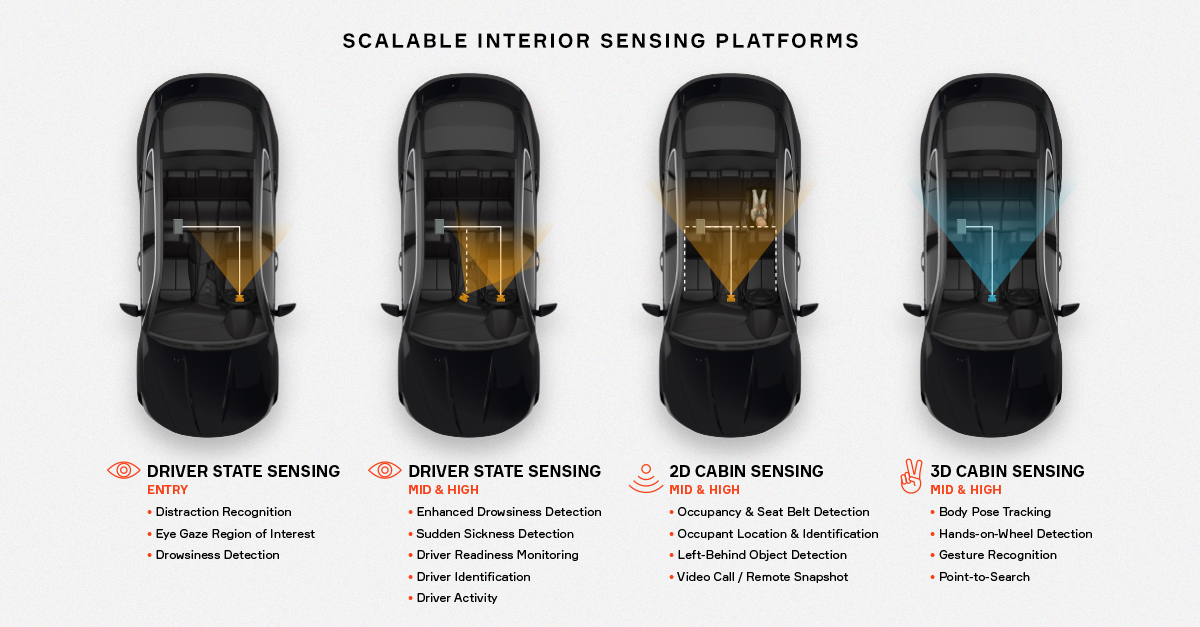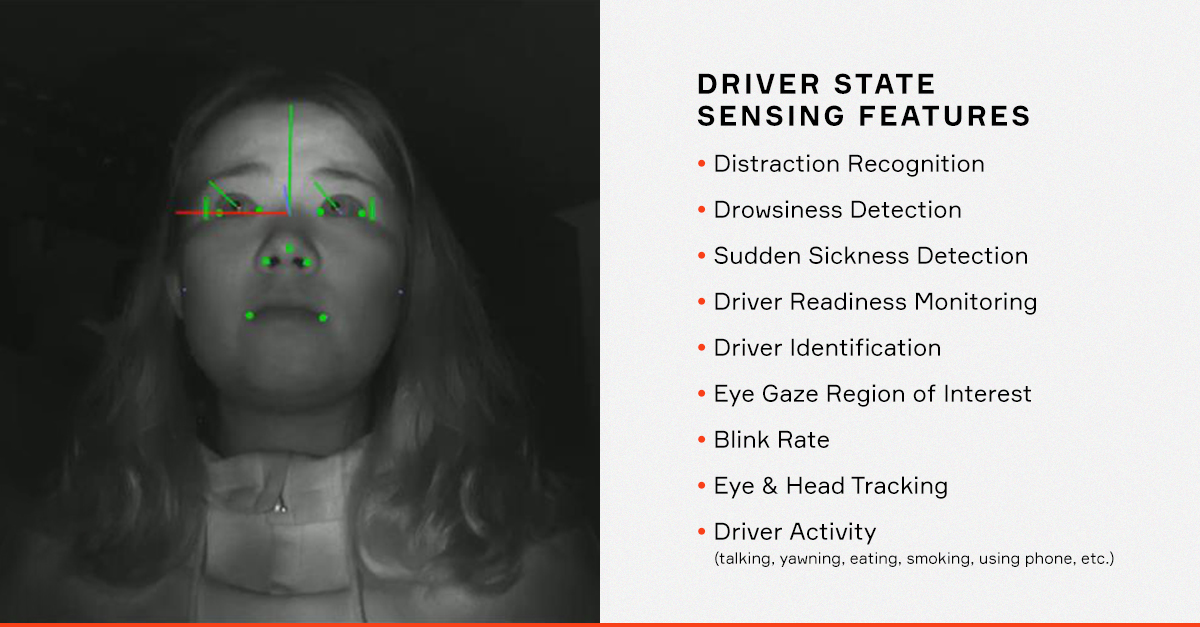Interior Sensing Platform Enables Wealth of Innovations
Much of the attention on improving vehicle safety is directed outward from the vehicle. When people think about safety today, they often think about helping motorists avoid collisions, with artificial intelligence interpreting signals from radars, cameras
and other sensors scanning the surrounding environment.
But what happens inside the vehicle is just as important as what happens outside, and the potential for safety innovation through interior sensing is just as great. OEMs have begun mounting cameras inside the vehicle in anticipation of upcoming driver state sensing and driver monitoring regulations, but such moves are really just the start. Interior sensors open a wealth of exciting possibilities to improve safety, comfort and convenience for the driver and passengers, while simultaneously helping to drive down costs.
Interior sensing systems represent an opportunity for OEMs to deliver features that will impress their customers and provide a competitive advantage. With interior sensing systems, OEMs will be able to offer drivers and passengers the ability to control certain vehicle functions via multimodal, human-machine interface approaches, including eye gaze and gesture recognition.
To realize the benefits to the in-cabin user experience, what is needed is a comprehensive interior sensing platform, integrated with the larger user experience system in the vehicle. The right platform will scale — from basic functionality that
ensures safety and meets regulations, to premium functionality that recognizes passengers and customizes the experience accordingly, to functions that are necessary to enable higher levels of automated driving.
In this white paper, explore the many possibilities created by interior sensing technologies.



